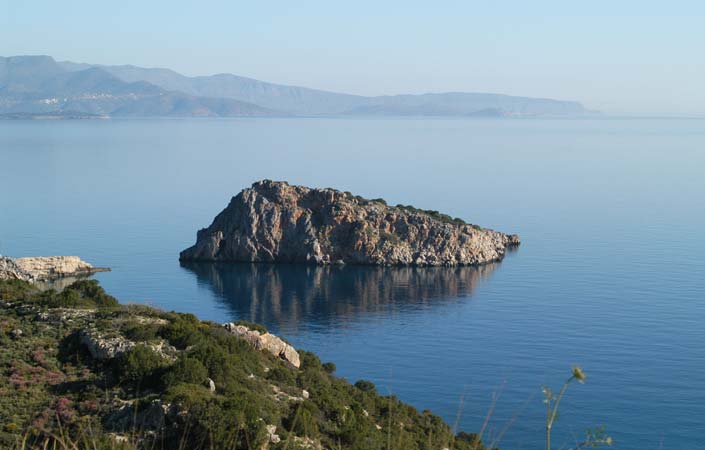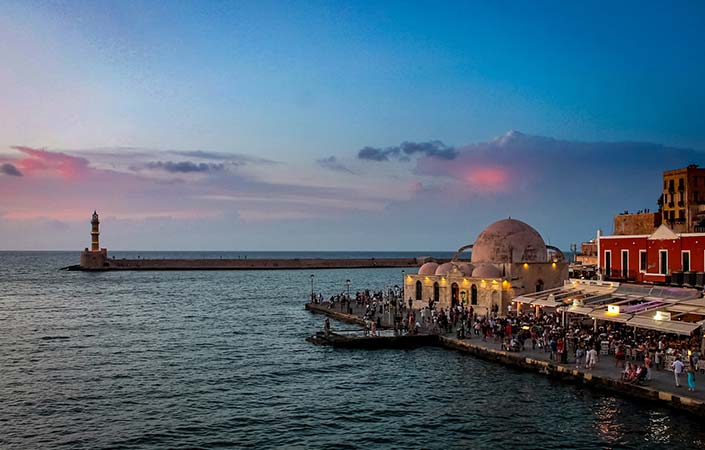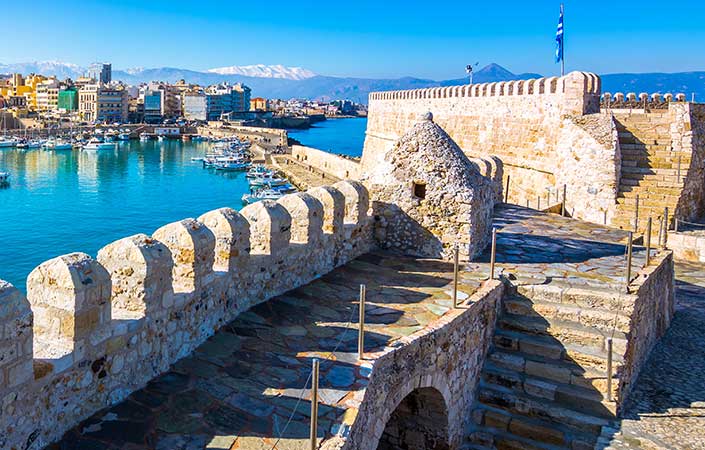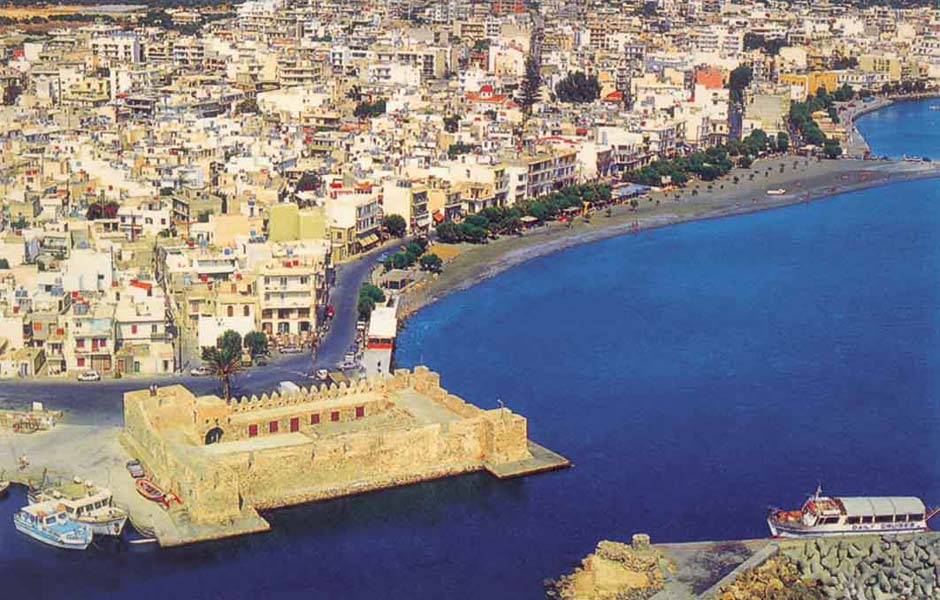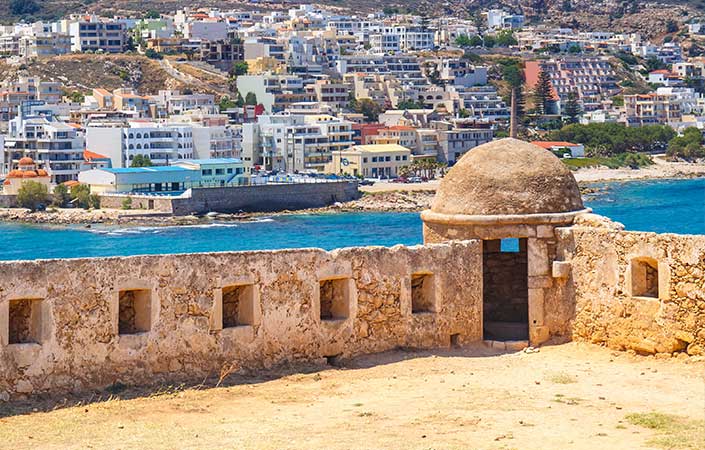Crete
Crete, the large island with the strange landscapes and rare beauties, is what has remained today from ancient Aigiada, the land that connected, million of years ago, Greece with Asia Minor. It is the bigger Greek island and one of the biggest in Mediterranean, with an area of 8.260 sq. km and an oblong shape, that resembles a mole, as if it was placed by the Gods, to protect the holy Greek ground from the huge waves of the Libyan Sea. Crete, is the crossroad between the three continents of the Mediterranean, and for this, its fertile grounds were the target of conquerors in the past.
Four thousand years ago the Minoans developed here the first Greek culture, with the luxurious palace of Knossos, that constitutes today an immense museum site. Unfortunately, the Minoan culture was destroyed in 1.400 BC, from the thrust wave caused by the explosion of the volcano in Thira, turning the residents to escape to the north. However, influences from the Minoan culture, can be seen in archaeological discoveries in Cyclades and northern Aegean, confirming archaelogists who support that there always existed interaction between the cultures of the Aegean Sea.
Crete is the birthplace of the Olympian Zeus, the painter Dominique Theotokopoulos or El Greco as he became later known, the poet Vintsentzos Kornaros who wrote “Erotokritos”, the writer of the famous “Zormpa” Nikos Kazantzakis, Eleftherios Venizelos who is still considered the bigger politician of newer Greece and many other famous personalities.
The modern Cretan people are characterized by a unique sentiment of independence and pride that make them distinguish from the other Greeks. The customs and traditions of this place, are maintained inalterable from generation to generation and are expressed in each happy or sad event of the daily life.
The Cretan sun shines almost the entire year on the tops of Psiloreiti with the great canyons and a few kilometres away the sandy beaches with the tall palm trees, creating still bigger contrasts in its natural landscapes. All of Crete, is a continuous succession from tall mountains, fertile plains, to over-populated cities, to graphic villages and cosmopolitan beaches that fascinate the visitor in his passage. The bigger cities of Crete are Chania, Rethymno, Heraklion and Agios Nikolaos found on the northern coasts of the island. In Crete are some of the most modern hotels of southern Europe, that make Crete one of the bigger and most developed tourist resorts of Mediterranean. The amazing thing is that as developed as tourism on the coasts is, life for the people in the mountainous villages continues in its traditional rythms, with raki, serenades and Cretan pentozali, under the sound of the Cretan lyre. The main products of Crete are wine, raki, olive oil, cheese and citrus fruits that are exported to the entire world.
